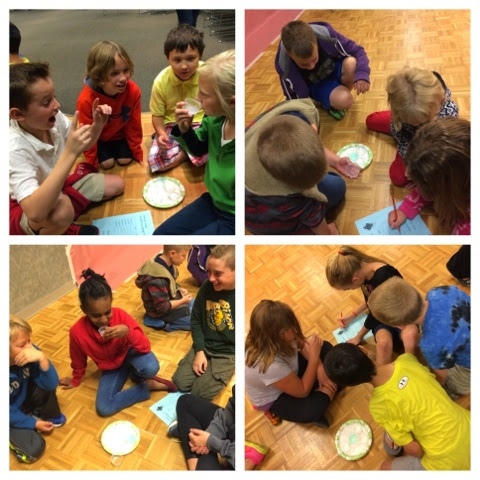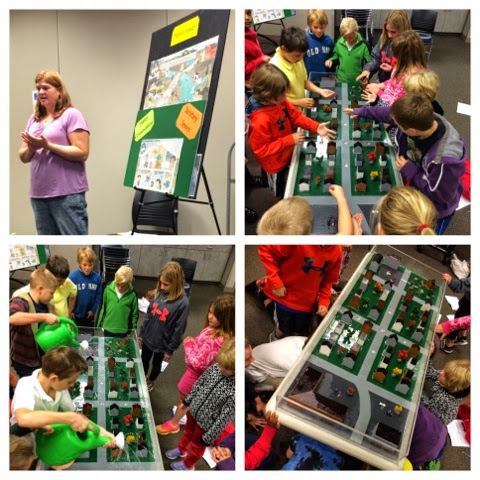Hello everyone! I hope you had a fabulous weekend! One of our topics this morning was to discuss the grading scale of 1-2-3-4-5. This conversation was created as a direct response to last week's conversation that went something like this...
Mrs. Clarey: "Do you know what the grading scale of 5-4-3-2-1 means?"
Class: "Uh..." (or just a blank stare)
Mrs. Clarey: "Well, we should probably talk about that so that when I start to write numbers on your papers you know what they mean. Don't you think?"
Class: "Yep, that'd probably be good."
So...here is a recap of our conversation today, just in case you are also in the "Uh..." boat. :)
Cue photo:

On this scale students typically begin the school year performing at what is considered a "2." Think of that star above the line as a "slider," which moves on pace with student learning. As we move through the year the goal is to finish at a "4," which means a student has mastered that standard. As I shared with my students, sometimes a student will master certain standards almost right away, while at the same time needing a full year to master others. We all learn at our own pace, and we all need to be challenged at our own level. A "1" would be considered performing below the grade level standard, and a "5" is producing evidence of learning beyond the fourth grade level. Both of these are rare!
Today I used the analogy of riding a bike to help explain...
- knowing that you can ride a bike to get places faster, but not sure how to use the pedals, steer, or get on properly
- riding the bike with the help of a parent who is holding onto the bike to keep it steady while you learn to pedal and steer (doing it, but only with instruction, guidance, and support)
- knowing how to pedal and steer but still wobbly, so a parent is running along side with a hand out or nearby as the biker slowly teeters their way down the sidewalk almost independently (doing it with less support, but still needing reassurance, pointers, and guidance)
- getting on, riding down the street, stopping, and dismounting all on your own! (doing it all on your own!)
- becoming a skilled rider capable of rugged mountain terrain, long distances, etc (able to use the skill in ways most people can't)
This grading scale is not new, but as it was introduced only last year I wanted to make sure we are all on the same page. Over the next few weeks you will slowly begin to see these numbers on assignments. Please keep in mind that the number on any given assignment is specific TO that assignment, not necessarily the overall mastery of the standard it's linked to. For example...on Friday I asked students to solve 3 addition problems with multiple digits and regrouping. Several students got all 3 problems correct, which would be considered a "4." However, the standard asks students to "Fluently add and subtract multi-digit whole numbers using the standard algorithm." These 3 problems do not address subtraction, and they were not to the 1,000,000 place value. So the "4" was specific to the assignment and showed mastery there, but would not be enough to move the slider on the progress report immediately to a "4."
Whew! How'd I do? I hope that this clears and confusion or misconceptions. Please feel free to contact me for further clarification if needed!



























